MOLDING AND CASTING
This week, the assignment was to mold and cast something. My first idea was to make a bouncy
ball that glows when it hits the ground; however, I really wanted to make food safe LEGO blocks
out of chocolate so the latter idea won in the end.
I modeled the LEGO from dimensions found online
in Rhino at 150% normal size. I made the mold in two parts: the outside and the inside detailing.
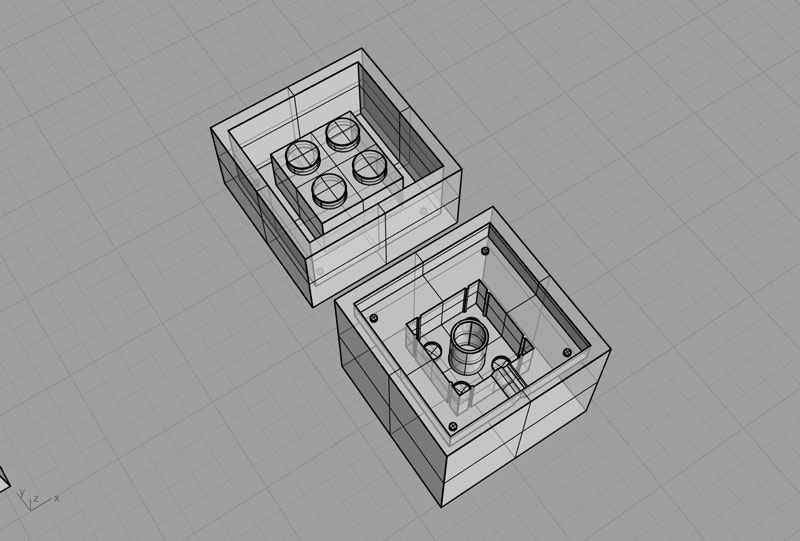
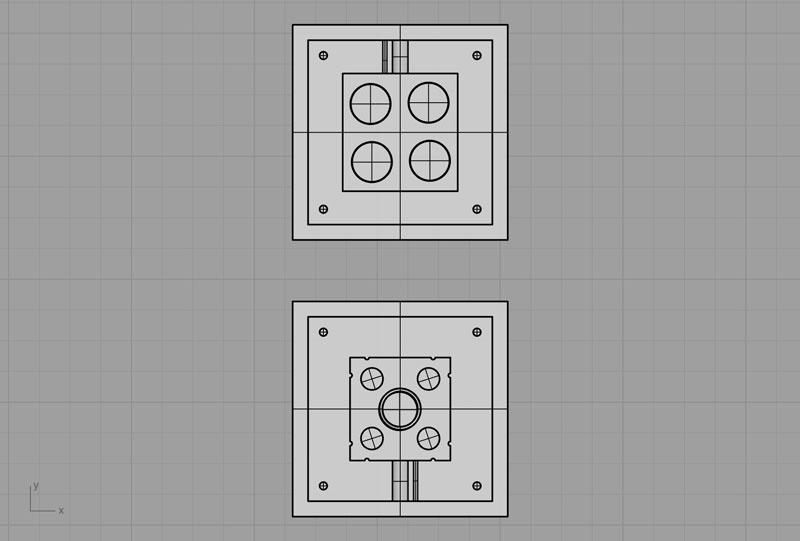
I created intake and exit holes for the mold as well as registration keys for the two parts,
making sure the total mold was under an inch deep since Guillermo had trouble with the endmill
not being able to cut deep enough.
I exported the model as an ASCII STL and used the fab modules default settings to mill the wax.
For some reason, the inside detailing STL milled find the first time whereas the outside file
kept returning some error about "no edges" found.
It would be useful to understand how the STL
is generated into the gradient PNG because I found there to be noticeable shrinking in the
z-direction (the lego was too "short"), but I was not sure how to fix that. The registration
keys for the mold also did not mill properly since they were relatively shallow. The pour holes
only showed up in the upper "outside" mold, but that was probably due to the fact that the
BW gradient for the holes was not very dramatic in the PNG.

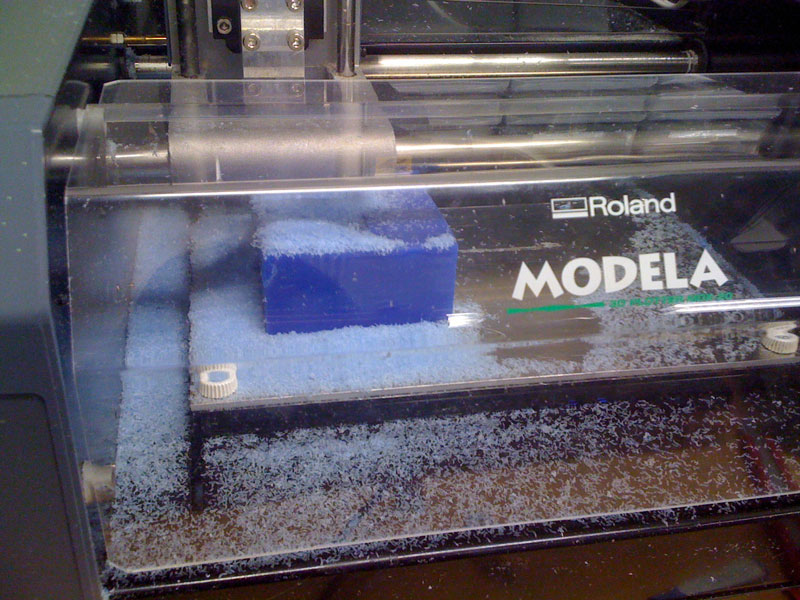

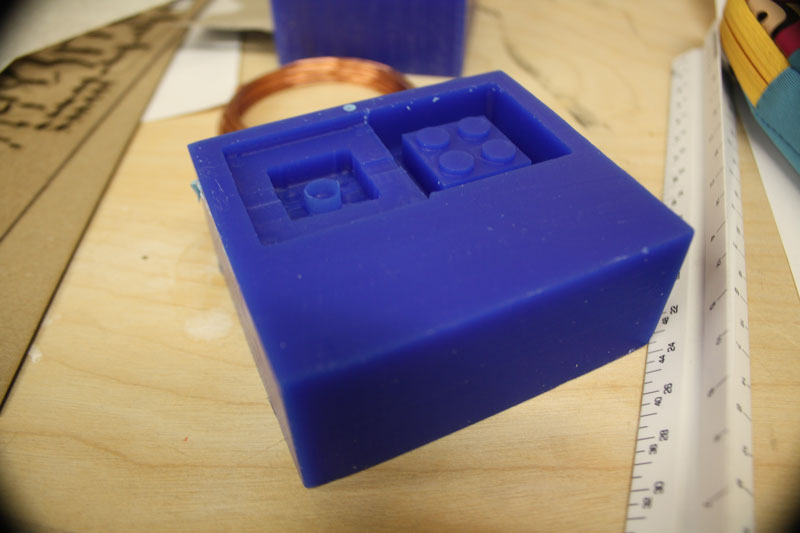
Next, I poured the silicone mixture into the wax and spent a couple minutes tapping the wax on
the surface of the table in the Arch FabLab trying to get as many bubbles out as possible. I made
too much silicone since I over estimated the size of my tiny mold so I poured the extra silicone
into extra steel cutouts I found on the water jet. I was worried that the tiny interior cylinder
in the wax mold would break off, but surprisingly, the silicone did not snap it off!
With Erioseto, I tried to cast my silicone mold with DryStone. The first time we tried to cast
four different molds at the same time, but partway through, the DryStone became too viscous to
pour. The casted piece had a great finish and had most of the detailing, but it was only
two-thirds of the entire piece.


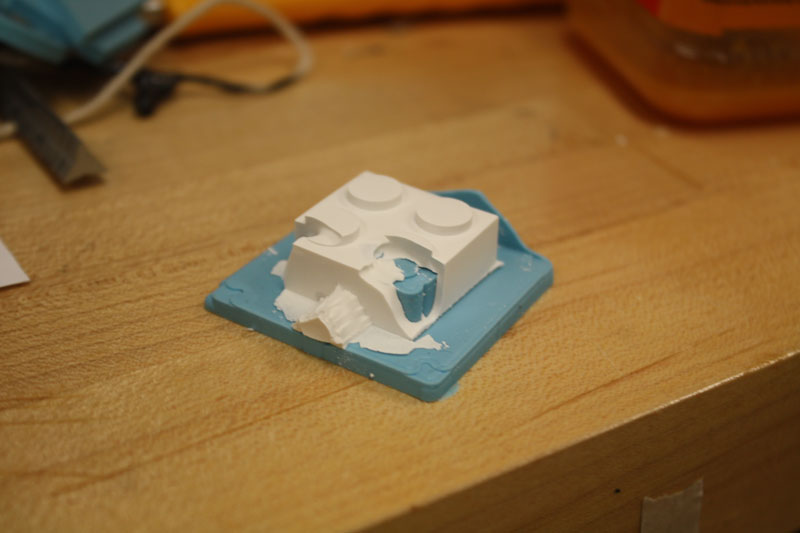
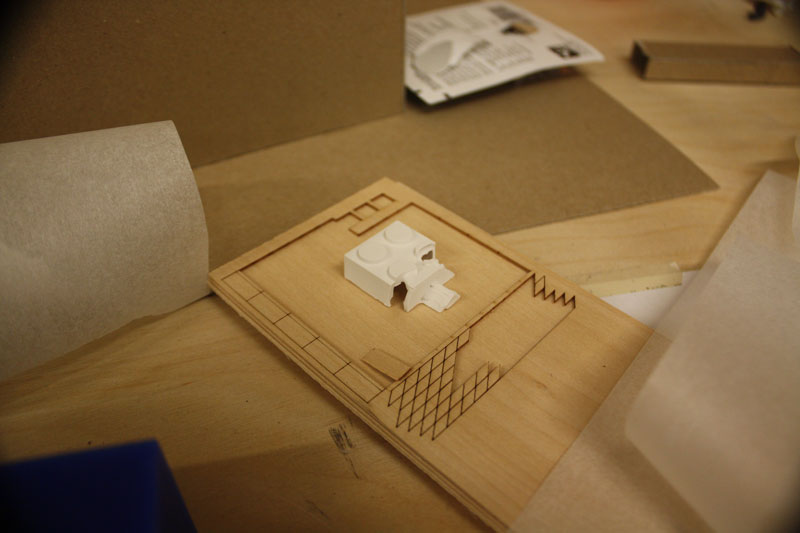
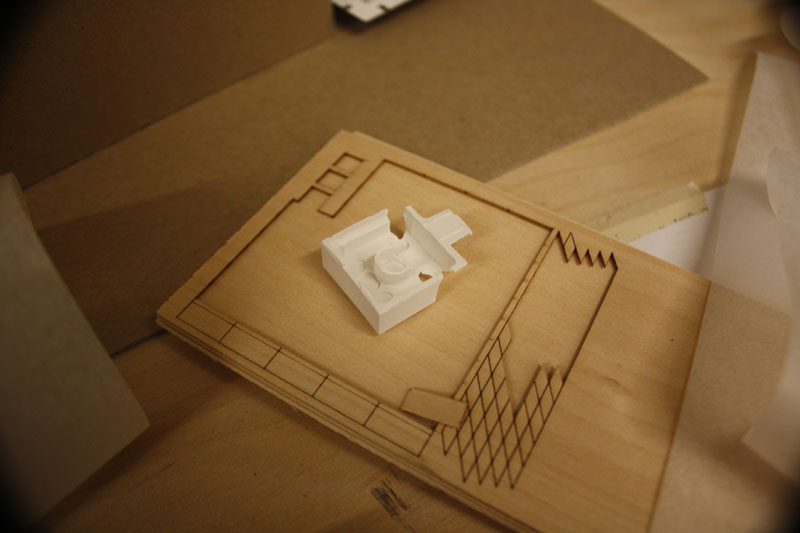
The second time, the mixture was too viscous to begin with so I added more water. I think that
the small pour hole got too clogged up and not much of the more watery mixture made it into
the mold.

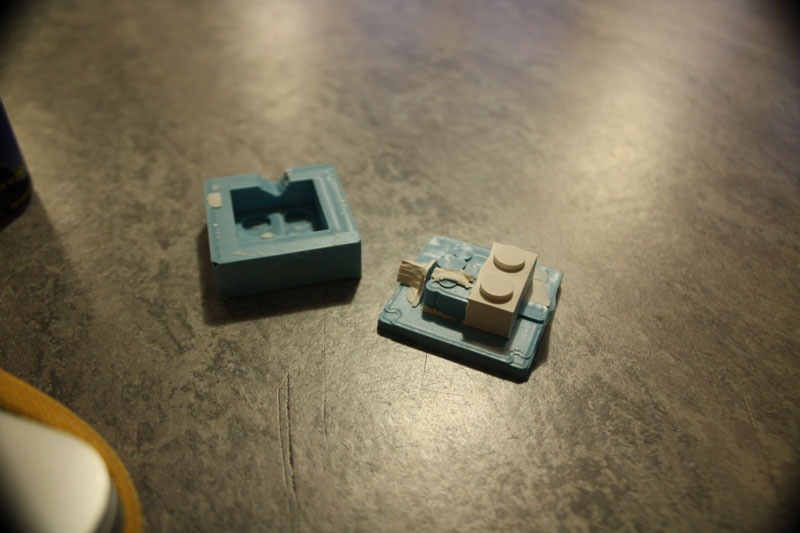
I hope to get some of the food safe molding material so that I can make a mold to cast chocolate
LEGO blocks. Once I get a whole LEGO block, hopefully they will stack together!